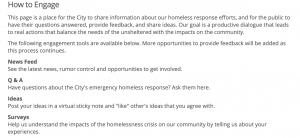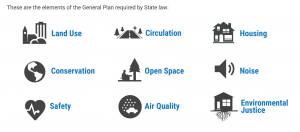
Guest blog brought to you by Casey Earp, Territory Manager – USA, Bang the Table
————————————————————————————————————————————————
Try searching for any keyword + “housing” and see what happens. The search will produce 100s of news results. Almost every state has housing discussions happening at the local level.
The current housing climate is difficult. Affordability and availability are a growing challenge, not just in the US, but throughout the world. Not many local governments are immune to housing woes caused by increased values, restrictive zoning, short term rentals, and access to mobility. These challenges often compound one another, making comprehensive housing policy challenging to enact and even harder for the public to envision the outcomes. This puts practitioners in a difficult position; there is a challenge, multiple paths to take, and a difficult audience to hear from.
How do you choose the best approach? Community feedback is vital in these decisions, the shared investment can be the difference in the outcome and adoption of the solutions. The biggest hurdle is that it is often extremely challenging to bring individuals into the conversation in a safe and respectful way. Housing discussions can bring out the extremes in your community, often leaving those who will be impacted by the outcomes reluctant to participate in the process. In an effort to keep the conversation productive, several of our clients are moving these conversations to a dedicated online portal, creating equity in access to information and opportunities to participate for all members of the community. And they are seeing success.
Jane Jacobs famously wrote “Cities have the capability of providing something for everybody, only because, and only when, they are created by everybody” in The Death and Life of Great American Cities. She was calling for more community engagement with those audiences who are impacted by urban forms of policy decisions, like housing. Much of the dialogue around growth and development has missed this mark. Equity is extremely challenging to achieve, especially when there are entrenched interests aiming to block every move local governments implement to ease the impact of the above-mentioned challenges.
Below I’ll share three examples where the city aims to be more equitable in their approach, going to where the audience is and speaking in plain terms about the issues:
Olympia, Washington engages its community on how the city is responding to homelessness. This discussion is clearly laid out for each user to educate themselves about the priorities and current programming the city is putting forward. The team also put together a video describing the process, making it very easy for every audience to follow along with that process. At Bang the Table, we have seen the inclusion of video in engagement projects reach new audiences in a very productive way. You can see below that Olympia is going above and beyond to create multiple communication channels with their community, using a variety of tools to engage.

This makes everyone feel that their voice is going to have an impact on the discussion. Additionally, there has been a community panel appointed to help navigate the diversity of opinions in Olympia. By appointing community leaders to this process, the city has empowered a grassroots process that can be accessed at any time through their online portal.
Truckee, California updates its Downtown Specific Plan and General Plan through a dedicated project site. This legally obligated process impacts every element of life in Truckee and the team is focused on bringing in as many voices as possible to discuss elements such as housing, open space, and land use.

This conversation drives users through an easy-to-follow process that will help provide community-driven data on each section of the plan. Through their use of mapping tools, users can identify exactly the location where they would like to see new or improved assets. The Town is also focused on creating equity by deploying opportunities for ESL audiences to participate. Equity is crucial for a process to be representative and the Town has focused on developing these opportunities and creating content that is easy to access by anyone using a screen reader to participate. Making everyone feel welcome is engagement 101 – don’t just think about the volume of responses, look at the demographic makeup of your audience when judging your engagement programming.
Fort Collins, Colorado discusses the update to their Affordable Housing Strategic plan through the use of an ideation and forum tool. This initial consultation is building their audience as they look to update strategic priorities around affordable housing stock, land use, and programming design to increase homeownership. Placing this discussion next to several other city priorities has helped the team cross-pollinate their audience and begin to develop shared outcomes to be included in the next five-year plan. Fort Collins has systematically built an online audience through a variety of discussions, including this one, to continually strengthen their connections to their community. Rapport is difficult to create through one-off engagements, but creating a process where a variety of topics are discussed will help your team mitigate the unraveling of your recommendations.
Housing discussions can be extremely difficult to navigate but there are successes to be had. See how community engagement is being used around the world to discuss affordable housing issues. We’ll dive deeper into housing-related engagement projects during a webinar on May 29th. Join us to learn how you can develop a process that is transparent and equitable for your communities and help build the relationships you need to successfully implement comprehensive policy changes.
